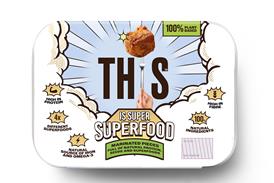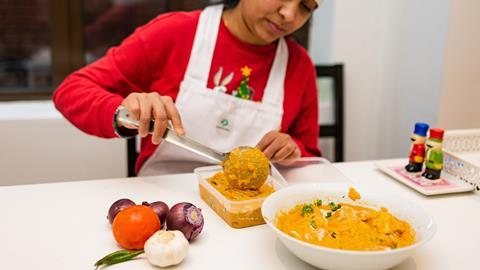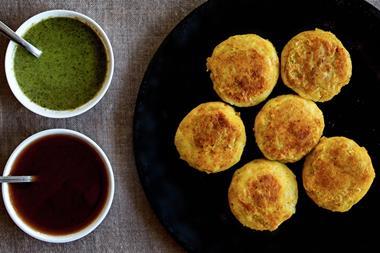The home cooking premise has won investors – but can it deliver?
Calling all out-of-work and wannabe chefs. The app Cook My Grub, which allows culinary enthusiasts to sell food from their kitchens, is seeking to “consolidate the home-cooked food market”.
Launched late last year, it has just secured more than £750k on Crowdcube to continue its expansion across the south east and beyond, exceeding its initial fundraising target by 150%.
As takeaway platform food orders soar – more than doubling for Deliveroo in the first quarter of this year, and nearly doubling for Just Eat – the app’s founders see a clear opportunity ahead.
But is Cook My Grub different enough to succeed? Will the takeaway boom last? And what of the current chef shortage, not to mention safety concerns?
The point of difference is clear enough. Cook My Grub’s USP is “access to home-cooked food that isn’t available on the high street”. The app fills a “clear gap in the market”, its founders say.
But questions remain over the UK’s ongoing appetite for takeaways as Covid restrictions ease. Deliveroo expects the “rate of growth to decelerate” to some extent.
“It is super-hard to predict what is waiting for us in the next half year and how the market will be impacted,” says Stephan Soroka of on-demand delivery marketing firm Wear Your Brand.
There is also the question of resource. The app will need a healthy count of chefs in its operating area to compete with the huge variety available on better-known platforms.
“The main challenge is targeting the right client and having supply. They always want choice.”
That could prove a sticking point. In May, a UKHospitality survey of hundreds of hospitality operators found 85% were in need of chefs. Many left the UK ahead of Brexit, more still during the pandemic. Many of those “have not come back” due to lockdowns, says Craft Guild of Chefs CEO Andrew Green.
“The ones that stayed – a lot have found other jobs and realise they can make the same money as they were before without working weekends and evenings,” Green adds. “It’s a work-life balance they didn’t have before.”
At the same time, that’s something offered by Cook My Grub – which gives chefs “the ability to decide when, what and how much you want to cook at your convenience”.
Plus, it’s not just appealing to the pros. The platform is also open to amateur cooks. It could provide income for workers made redundant during the pandemic, who have already created 1,450 new food businesses in 2020, according to research by The Accountancy Partnership.
Essentially, it will all come down to managing supply and demand effectively, says Soroka. “The main challenge is targeting the right client and having supply. They always want choice. The second thing to solve is how to get the client to order the service not just once a month but weekly or daily.”
Finally, the app needs to convince consumers and authorities that its home-made offerings are safe.
Safety checks
Last year the Food Standards Agency called on Facebook to “take responsibility” with stricter checks on food sellers on its platform, warning those not registered or inspected by the local authority could be putting the public at risk. But many consumers are unfazed – each month from April 2020 to January this year a steady 7% to 8% of respondents to an FSA tracker reported buying food on Facebook Marketplace.
And Cook My Grub is reassuring wary consumers by requiring chefs to register as a food business, open to local authority inspection. As part of its “hygiene promise”, it will give chefs training covering allergy awareness. “Additionally, Cook My Grub conducts its own internal hygiene audits, while supporting chefs with required local council registrations,” the platform says.
So far, the formula appears to be working. In the past quarter the app has seen a doubling of its customer base and a 300% uplift in orders. Rapid expansion to 10 further locations is underway. While it may face challenges in future, its founders have at least one thing right: “It’s been an outstanding start to 2021.”




















No comments yet